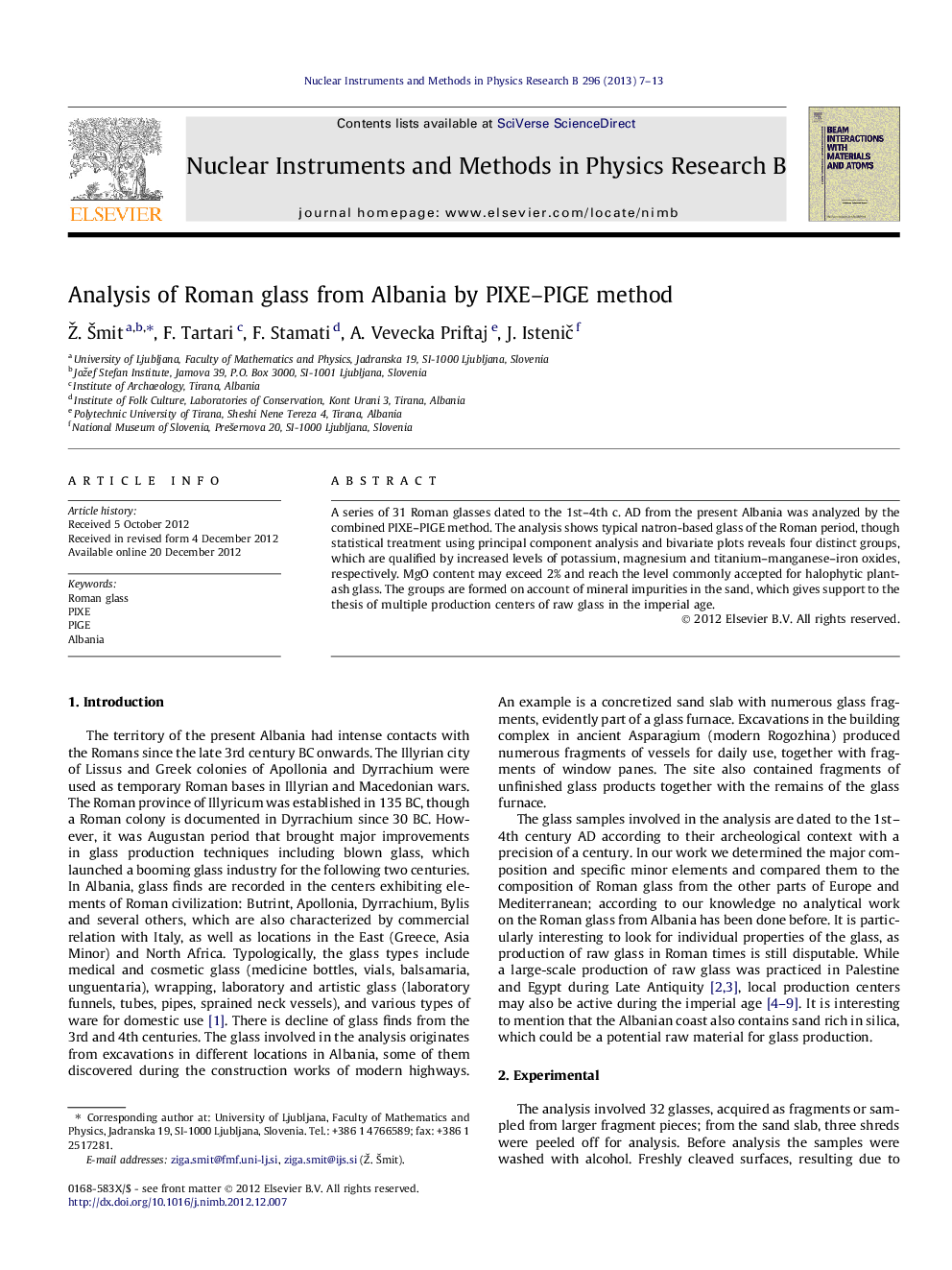| Article ID | Journal | Published Year | Pages | File Type |
|---|---|---|---|---|
| 1684500 | Nuclear Instruments and Methods in Physics Research Section B: Beam Interactions with Materials and Atoms | 2013 | 7 Pages |
Abstract
A series of 31 Roman glasses dated to the 1st–4th c. AD from the present Albania was analyzed by the combined PIXE–PIGE method. The analysis shows typical natron-based glass of the Roman period, though statistical treatment using principal component analysis and bivariate plots reveals four distinct groups, which are qualified by increased levels of potassium, magnesium and titanium–manganese–iron oxides, respectively. MgO content may exceed 2% and reach the level commonly accepted for halophytic plant-ash glass. The groups are formed on account of mineral impurities in the sand, which gives support to the thesis of multiple production centers of raw glass in the imperial age.
Keywords
Related Topics
Physical Sciences and Engineering
Materials Science
Surfaces, Coatings and Films
Authors
Ž. Šmit, F. Tartari, F. Stamati, A. Vevecka Priftaj, J. Istenič,
